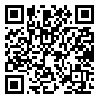Volume 4, Issue 1 (3-2019)
IJREE 2019, 4(1): 11-21 |
Back to browse issues page
Download citation:
BibTeX | RIS | EndNote | Medlars | ProCite | Reference Manager | RefWorks
Send citation to:



BibTeX | RIS | EndNote | Medlars | ProCite | Reference Manager | RefWorks
Send citation to:
Akbari J, Chalak A. (2019). Contributory Role of Praise in Improving Collocational Knowledge of University Students Majoring in TEFL and Linguistics. IJREE. 4(1), doi:10.29252/ijree.4.1.11
URL: http://ijreeonline.com/article-1-129-en.html
URL: http://ijreeonline.com/article-1-129-en.html
English Department, Islamic Azad University, Isfahan (Khorasgan) Branch, Isfahan, Iran
Abstract: (8215 Views)
The power of praise in changing student behavior is that it both indicates teacher approval and informs the student about how the praised academic performance or behavior conforms to teacher expectations. Notably, praise plays a significant role in the rate and success of learning process in general, and in language learning classroom in particular. Accordingly, the present study sought to investigate the significant influence of praise on the growing trend of university students with different majors, namely, TEFL and linguistics. To this end, from the population of students majoring in English, at the Islamic Azad University, Isfahan, Iran, two classes of sophomore students were selected, each containing thirty participants. Subsequently, the experimental group was exposed to a wide variety of distinguishing instructor praise expressions throughout the entire term while the students in the control group were not praised and encouraged. The results of the t- test revealed that the group which was praised by the instructor during the term progressed substantially in comparison with the other group. Moreover, there appeared to be a positive correlation between instructor praise and learner progress. Evidently, the results of the present study may have practical implications for EFL teachers, materials developers, and syllable designers.
Type of Study: case report |
References
1. Bost, L. W., & Riccomini, P. J. (2006). Effective instruction: An inconspicuous strategy for dropout prevention. Remedial and Special Education, 27(5), 301-311. [DOI:10.1177/07419325060270050501]
2. Brophy, J. E. (1979). Teacher behavior and its effects. Lansing, MI: Michigan State University Institute for Research on Teaching. [PMCID]
3. Caldarella, P., Christensen, L., Young, K. R., & Densley, C. (2011). Decreasing tardiness in elementary school students using teacher-written praise notes. Intervention in School & Clinic, 47(2), 104-112. http://dx.doi.org/10.1177/1053451211414186 [DOI:10.1177/1053451211414186]
4. Carr, E. G., Taylor, J. C., & Robinson, S. (1991). The effects of severe behavior problems in children on the teaching behavior of adults. Journal of Applied Behavior Analysis, 24(3), 523-535. doi: 10.1901/jaba.1991.24-523 [DOI:10.1901/jaba.1991.24-523]
5. Colvin, G. (2004). Managing the cycle of acting-out behavior in the classroom. Eugene, OR: Behavior Associations.
6. Conroy, M. A., Sutherland, K. S., Snyder, A., Al-Hendawi, M., & Vo, A. (2009). Creating a positive classroom atmosphere: Teachers' use of effective praise and feedback. Beyond Behavior, 18(2), 18-26. https://eric.ed.gov/?id=EJ869681
7. Dweck, C. S. (1999). Caution – praise can be dangerous. In B.A. Marlowe & A.S. Canestrari (Eds.), Educational psychology in context: Readings for future teachers (pp. 207-217). Thousand Oaks: Sage.
8. Edwards, J. K. (2013). Strengths-based supervision in clinical practice. Thousand Oaks, CA: SAGE.
9. Haimovitz, K., & Henderlong-Corpus, J. (2011). Effects of person versus process praise on student motivation: Stability and change in emerging adulthood. Educational Psychology, 31(5), 595-609. http://dx.doi.org/10.1080/01443410.2011.585950 [DOI:10.1080/01443410.2011.585950]
10. Haydon, T., & Musti-Rao, S. (2011). Effective use of behavior-specific praise: A middle school case study. Beyond Behavior, 20(2), 31-39. https://eric.ed.gov/?id=EJ958714
11. Miles, S. B., & Stipek, D. (2006). Contemporaneous and longitudinal associations between social behavior and literacy achievement in a sample of low-income elementary school children. Child Development, 77(1), 103-117. doi: 10.1111/j.1467-8624.2006.00859.x [DOI:10.1111/j.1467-8624.2006.00859.x]
12. Nelson, J. A. P., Young, B. J., Young, E. L., & Cox, G. (2010). Using teacher-written praise notes to promote a positive environment in a middle school. Preventing School Failure, 54(2), 119-125. http://dx.doi.org/10.1080/10459880903217895 [DOI:10.1080/10459880903217895]
13. Partin, T. C. M., Robertson, R. E., Maggin, D. M., Oliver, R. M., & Wehby, J. H. (2010). Using teacher praise and opportunities to respond to promote appropriate student behavior. Preventing School Behavior, 54(3), 172-178. http://dx.doi.org/10.1080/10459880903493
14. Schumaker, J. B., Deshler, D. D., Bulgren, J. A., Davis, B., Lenz, B. K., & Grossen, B. (2002). Access of adolescents with disabilities to general education curriculum: Myth or reality? Focus on Exceptional Children, 35(3), 1-16. doi: 10.17161/fec.v35i3.6795 [DOI:10.17161/fec.v35i3.6795]
15. Scott, T. M., Nelson, C. M., & Liaupsin, C. J. (2001). Effective instruction: The forgotten component in preventing school violence. Education and Treatment of Children, 24(3), 309-322. https://www.jstor.org/stable/42899664
16. Skalecka, K. (2010). The effective use of praise in teaching adults. University of Pardubice Faculty of Arts and Philosophy.
17. Skipper, Y., & Douglas, K. (2012). Is no praise good praise? Effects of positive feedback on children's and university students' responses to subsequent failures. British Journal of Educational Psychology, 82(2), 327-339. doi: 10.1111/j.2044-8279.2011.02028.x [DOI:10.1111/j.2044-8279.2011.02028.x]
18. Villa, R. A., Thousand, J. S., Nevin, A., & Liston, A. (2005). Successful inclusive practices in middle and secondary schools. American Secondary Education, 33(3), 33-52. https://www.jstor.org/stable/41064553
Send email to the article author
| Rights and permissions | |
 |
This work is licensed under a Creative Commons Attribution-NonCommercial 4.0 International License. |

This work is licensed under a Creative Commons Attribution-NonCommercial (CC BY-NC 4.0)






